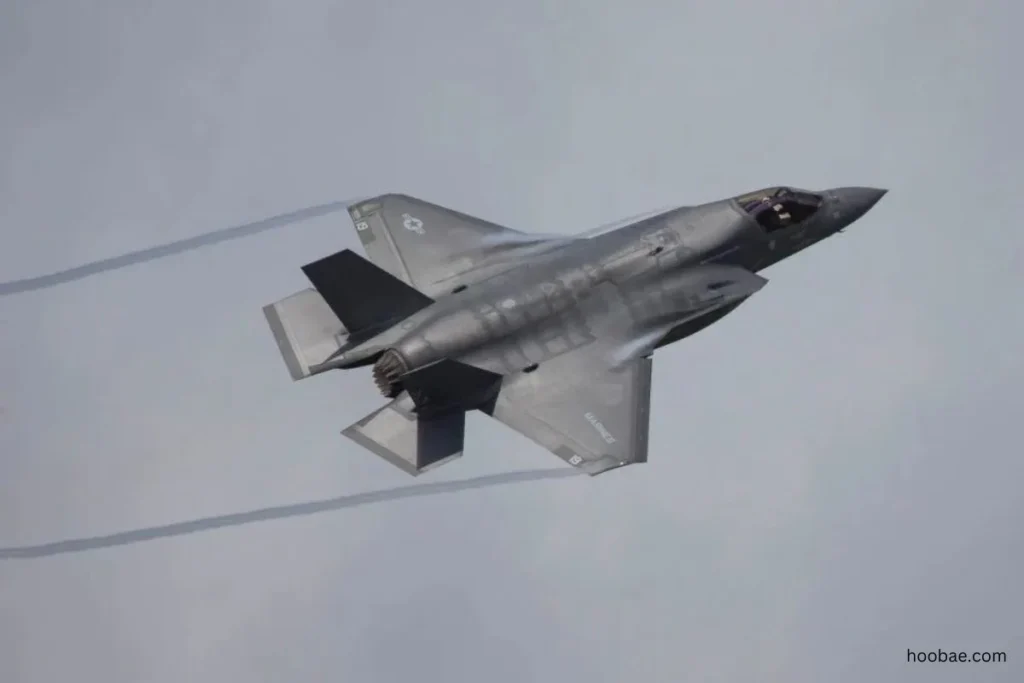As public resistance to the Lockheed Martin Canada F-35 Purchase fighter jet grows, newly appointed Canadian Prime Minister Mark Carney plans to look at alternatives. The growing national outrage is a response to US President Donald Trump’s expanding trade war and perceived threats to Canadian sovereignty.
Amid escalating tensions between Canada and the United States, Carney’s government is reconsidering its commitment to the Canada F-35 program, which has long been a source of contention in Canadian defense policy. Critics claim that Canada’s reliance on US military technology makes it subject to political pressure, particularly as Trump’s administration continues to impose trade restrictions and make demands that many perceive as a violation of national sovereignty.
The Canada F-35 procurement review is likely to look into alternative fighter jet options, such as European and locally built ones, to guarantee Canada’s defense capabilities remain strong without relying too heavily on the United States. This decision is consistent with growing public support for a more independent military procurement strategy.
As the issue develops, security analysts believe Carney’s decision will have far-reaching consequences for Canada’s defense partnerships and long-term military policy. Before reaching a final choice, the administration plans to meet with defense experts, allies, and business leaders.
Newly elected Canadian Prime Minister Mark Carney plans to reconsider Canada’s commitment to the Lockheed Martin F-35A fighter jet program as public outrage over US President Donald Trump’s trade war and threats to Canadian sovereignty grows. The contentious multibillion-dollar acquisition has been under investigation for years, but new tensions with Washington have rekindled calls for Canada to consider alternate choices. Many Canadians see Trump’s aggressive economic tactics and political rhetoric as a direct threat to national sovereignty, forcing the government to reassess its reliance on American-made defense technology.
Carney’s evaluation will most likely look into European and local options for the F-35A, ensuring Canada maintains a strong and independent defense posture without relying too heavily on the US. According to experts, resorting to manufacturers like Saab’s Gripen or the Eurofighter Typhoon might provide Canada with credible choices that meet its defense objectives while minimizing sensitivity to political demands from the United States. Carney’s attitude will be widely monitored as the discussion progresses, with ramifications not only for Canadian military procurement but also for the country’s larger geopolitical stance in an increasingly uncertain global environment.
“The prime minister has asked me to go and examine those things and have discussions with other sources, particularly where there may be opportunities to assemble those fighter jets in Canada,” Defense Minister Bill Blair told the CBC late on March 14.
Canada chose the F-35A to replace its outdated Boeing CF-18 aircraft in 2022 following a protracted and tortuous competition. Ottawa has also bought the first 16 F-35As for the Royal Canadian Air Force, potentially putting the remaining 72 jets in danger.
Sweden’s Saab lost a bid three years ago to produce, maintain, and upgrade F-39E Gripen fighters in Canada, but the current step may reopen the door. During the initial review, Canada prioritized the F-35’s stealth and overall combat capability.
“[The F-35] was the fighter jet identified by our air force as the platform that they required, but we are also examining other alternatives—whether we need all of those fighter jets to be F-35,” Blair explained to the Canadian Broadcasting Corporation (CBC).
The F-35’s international customer base has been relatively consistent, with one exception. In 2018, the US government prohibited Turkey’s air force and industry from participating in the Canada F-35 program. The move occurred after Turkey took delivery of the Russian S-400 air defense system, which the Canada F-35 was designed to counter.
Canada’s approach to fighter purchases has previously been hampered by industrial disputes with its southern neighbor. In 2017, Canada terminated an agreement to purchase 24 Boeing F/A-18E/F Super Hornets as an interim replacement for its aging CF-18A/Bs. Former Prime Minister Justin Trudeau ordered the termination following Boeing’s trade lawsuit against Bombardier’s C Series airplane program. The American firm lost the case, but not before Bombardier felt obligated to sell the C Series program to Airbus, which renamed the narrowbody the A220 family.
You can read more blogs about the latest aviation updates!

